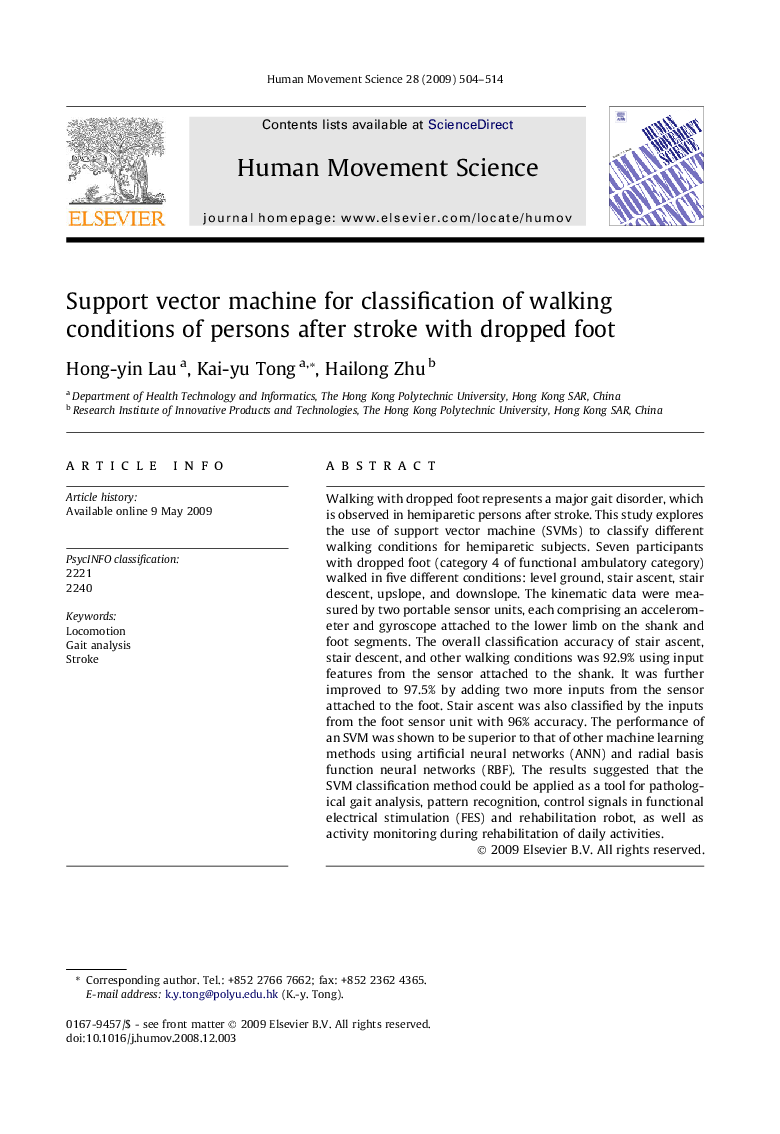| Article ID | Journal | Published Year | Pages | File Type |
|---|---|---|---|---|
| 928796 | Human Movement Science | 2009 | 11 Pages |
Walking with dropped foot represents a major gait disorder, which is observed in hemiparetic persons after stroke. This study explores the use of support vector machine (SVMs) to classify different walking conditions for hemiparetic subjects. Seven participants with dropped foot (category 4 of functional ambulatory category) walked in five different conditions: level ground, stair ascent, stair descent, upslope, and downslope. The kinematic data were measured by two portable sensor units, each comprising an accelerometer and gyroscope attached to the lower limb on the shank and foot segments. The overall classification accuracy of stair ascent, stair descent, and other walking conditions was 92.9% using input features from the sensor attached to the shank. It was further improved to 97.5% by adding two more inputs from the sensor attached to the foot. Stair ascent was also classified by the inputs from the foot sensor unit with 96% accuracy. The performance of an SVM was shown to be superior to that of other machine learning methods using artificial neural networks (ANN) and radial basis function neural networks (RBF). The results suggested that the SVM classification method could be applied as a tool for pathological gait analysis, pattern recognition, control signals in functional electrical stimulation (FES) and rehabilitation robot, as well as activity monitoring during rehabilitation of daily activities.
